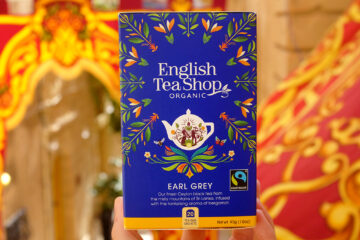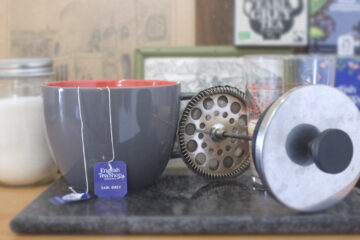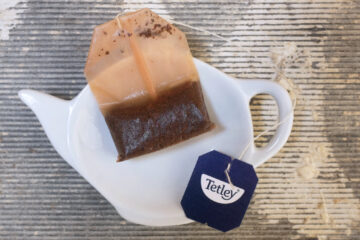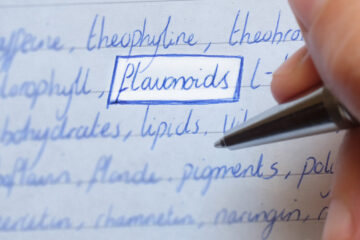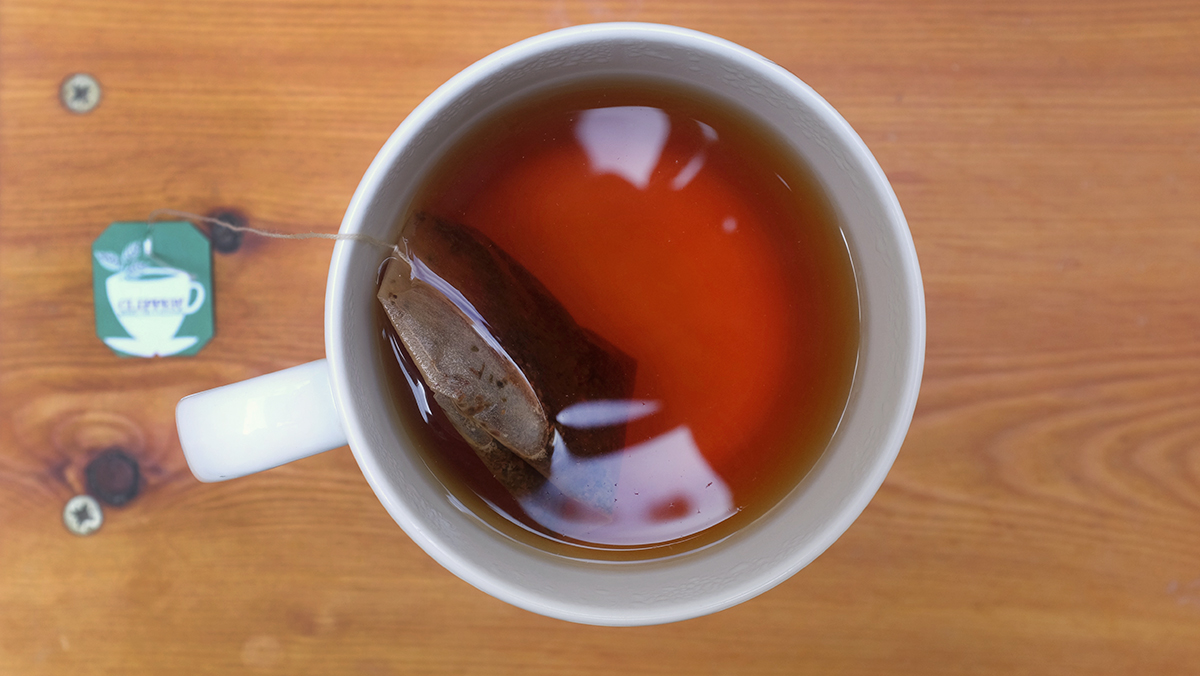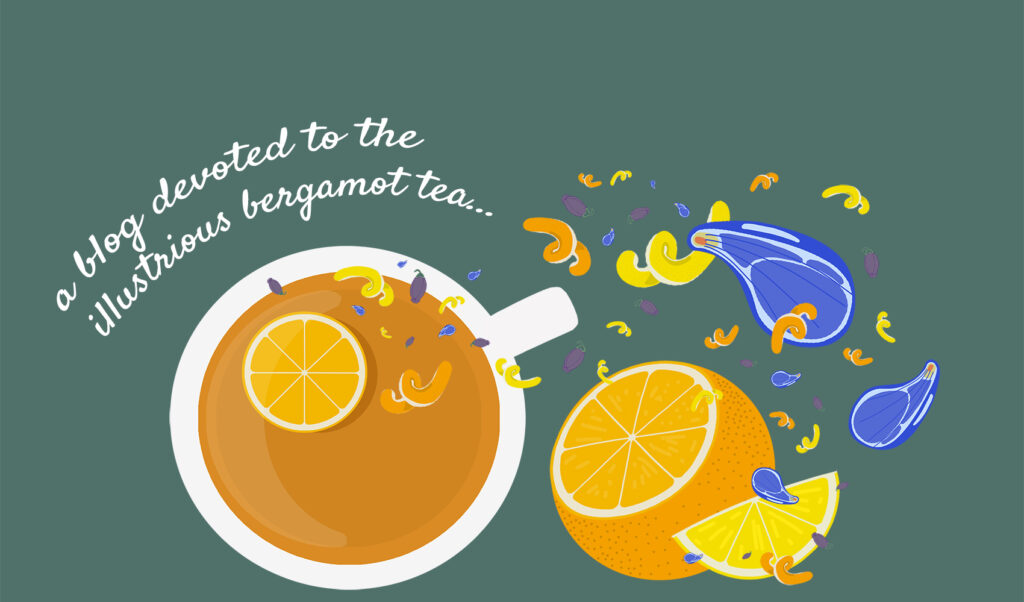Sure, we’ve all heard of classic Earl Grey tea.
But what on earth is Russian Earl Grey?
And how does it differ from one of the world’s favourite tea blends?
Let’s discuss.
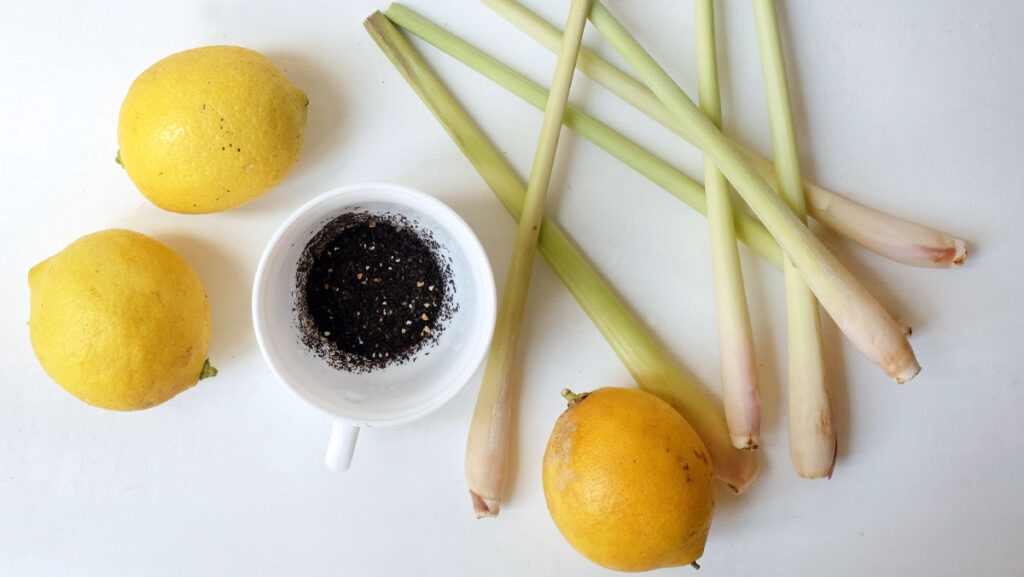
Table of Contents
- Earl Grey vs. Russian Earl Grey
- Russian Earl Grey Ingredients
- Russian Earl Grey Origins
- Popular Russian Earl Grey Blends
- How to Make Russian Earl Grey Tea
- Is It Even Russian, Though?
Earl Grey vs. Russian Earl Grey
What is Earl Grey Tea?
Earl Grey is a popular tea blend that consists of black tea and bergamot oil.
It’s believed that Earl Grey tea was first created in the 1800s, under the influence of Charles Grey, the 2nd Earl of Grey.
But whether or not the blend has anything to do with Charles Grey is still up for debate. And the true history of Earl Grey tea will likely remain a mystery. Oh my.
Still, Earl Grey tea has since taken the world by storm.
What is Russian Earl Grey Tea?
Basically, Russian Earl Grey is just like normal Earl Grey. But with added lemon.
Although, some contemporary blends may include lemongrass, blue cornflowers, and orange peel. Among other ingredients.
It’s especially delicious, with sweet citrus overtones, malty undertones, and a lasting, mellow finish.
Similar in style to a Lady Grey tea. But with more of a citrus punch.
Russian Earl Grey Ingredients
Earl Grey Building Blocks (Must-Have)
- Black Tea
- Bergamot
Commonly Found in Russian Earl Grey
- Lemon
- Lemongrass
- Orange Peel
- Cornflower Petals
Variations Include
- Clove
- Clover
- Grapefruit Peel
- Lime Peel
- Calendula Petals
- Yin Zhen Buds
Like all types of Earl Grey, ingredients will vary depending on the tea maker.
Russian Earl Grey Origins
Tea in Russia
Tea was first introduced to Russia in 1618 as a gift from a Chinese ambassador to Tsar Michael Fedorovich. But it’s said that the Russians didn’t initially take to the drink.
Instead, they preferred to drink warm fruit and herbal beverages. So, it took a little while for their tastes to adjust to the bitterness of black tea.
When they eventually did, the popularity of tea quickly spread across Russia. Now, Russians are amongst the highest tea drinkers per capita.
But What About the Lemon?
While the Russians experimented with several black tea blends (such as added ginger, salt, rice, and even onions), the most popular was the addition of lemon.
It’s said that lemons first originated in Russia in the early 18th century when Peter I brought them over from Europe.
Then, lemon was added to Russian tea as a cure for car sickness due to the poor quality roads.
Popular tea brands (like Twining’s and Lipton) would later take this lemon and tea inspired recipe and add it to Earl Grey tea. Thus creating Russian Earl Grey.
And the Lemongrass?
Often reserved for Southeast Asian cooking, lemongrass combines both the taste of lemon and ginger.
As a result, the taste is more delicate and complex, with spiced, floral, woodsy, and minty notes. As opposed to the sour, bold, and bitter flavour of lemon.
And it’s often used to give herbal and tisane based teas a light lemon taste.
Of course, lemongrass was unlikely to be around during the Tsar’s reign. But given Russia’s love of lemon, spice, and herbal teas, it stands to reason why teamakers opt to use lemongrass instead of lemon.
Russian Earl Grey, after all, is a modern blend inspired by Russia’s love of fruity teas.
Popular Russian Earl Grey Blends
Today, Russian Earl Grey is produced by many brands. Although, their blends all vary slightly.
Lemon is still prevalent in mainstream bagged tea brands. But many loose-leaf versions now include lemongrass instead. And sometimes, orange peel and blue cornflower petals too.
Twining’s Russian Earl Grey
The ingredients of Twinings Russian Earl Grey are black tea, bergamot, and lemon flavourings.
It’s very similar to the “new and improved” 2014 recipe for Twining’s Earl Grey, The Earl Grey. A blend that also includes lemon.
Lipton Russian Earl Grey
The Lipton version of this Russian inspired blend is simply black tea and “aroma”. Whatever that means.
It’s said to have a “Strong and Lemony Taste”.
While their more premium, loose-leaf Russian Earl Grey, contains added citrus peel and blue cornflower.
Lord Nelson Russian Earl Grey
Similar to Lipton’s Russian Earl Grey, the Lord Nelson blend contains black tea, orange peel, “aroma”, bergamot flavour, and blue cornflower petals.
Pickwick Russian Earl Grey
A modern take on the classic Russian Earl Grey, Pickwick contains black tea, lemongrass, and bergamot flavouring.
TWG Russian Earl Grey
This unusual blend by TWG completely turns the idea of Russian Earl Grey on its head.
Unlike other teamakers, this tea includes black tea, bergamot, and Yin Zhen white tea buds.
How to Make Russian Earl Grey Tea
It’s simple to make a delicious cup of Russian Earl Grey tea at home.
The easiest way is by adding Russian Earl Grey tea bags to a cup, pouring in 100°C water, and letting it infuse for three to five minutes, depending on taste.
Then, you might want to add milk, sugar, or honey.
Alternatively, to make Russian Earl Grey from scratch!
Step One: Take one gram of black tea (preferably Ceylon or Assam), half a gram of lemongrass, and a splash of bergamot oil.
Step Two: Add to a cup and pour in 100°C water.
Step Three: Let brew for between four and eight minutes, depending on taste.
If that doesn’t tickle your fancy, then you might just want to add a dash of lemon to your next cup of Earl Grey!
Is It Even Russian, Though?
While Russian Earl Grey is part of the classic Earl Grey tea family, it’s fairly different. A little sweeter, a little more citrusy, it’s a taste that you’re bound to fall in love with.
The question of whether this Earl Grey is actually Russian, though, is still up in the air.


